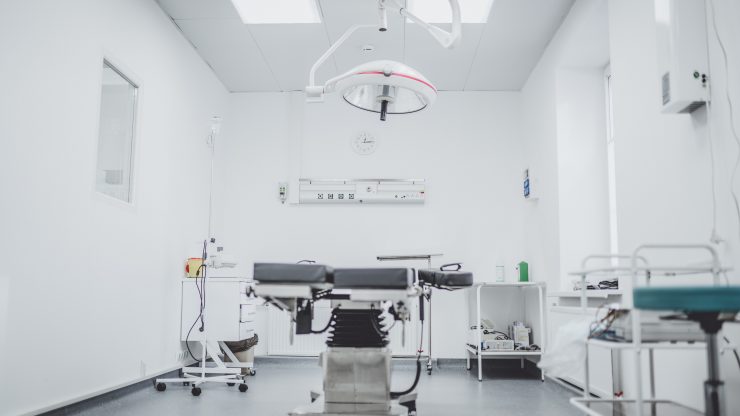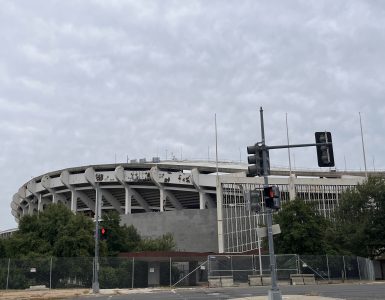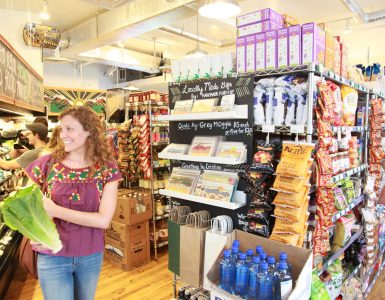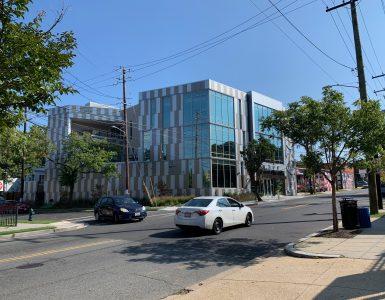As part of a wide-reaching plan to address health inequities in the District, city officials and health leaders are considering telehealth as a way to close widening gaps between communities east and west of the Anacostia River.
Residents in Wards 7 and 8 are less likely to have health insurance than people living in other wards, according to this year’s Health Equity Report. The city’s racial and income divide means people in Anacostia live, on average, for 70 years, while residents in Cathedral Heights and Woodley Park live about two decades longer.
As 150,000 residents in Wards 7 and 8 continue to share one hospital that doesn’t have a trauma center or maternity ward, telehealth could provide access to much-needed care in other parts of the city.
Telehealth is a blanket term for technology that helps healthcare providers and patients communicate without being in the same place. Mobile apps, live video conferencing and wearable technology that monitors physical activity – like watches or fitness bands – are all considered telehealth.
City leaders have debated the best ways to solve health inequities for decades. Mayor Muriel Bowser’s Commission on Healthcare Systems and Transformation, which was established this summer, is the latest group to take on the challenge. The commission is expected to deliver a report to Bowser in December.
According to a 140-page draft report, the commission has developed dozens of recommendations, including solutions to emergency room overcrowding, ways to increase access to urgent care services and ways to train young people to be health advocates.
The proposal outlines a recommendation to prepare participants in the Marion S. Barry Summer Youth Employment Program to educate their peers about things like nutrition and navigating emergency rooms
Every year, the program places about 10,000 young people between 14-24 years old in summer jobs throughout the city.
“Nearly 60% of the participants are residents of Wards 7 and 8,” the draft proposal says. “Arguably, the communities that are most in need of enhanced public knowledge are in these wards.”
David Catania, the commission’s chair, said a similar peer education strategy has worked for the city’s Young Women’s Project.
“We currently have a young women’s empowerment group that does this work extraordinarily right now in the city. We found that they particularly enjoyed, especially around reproductive and safe sex messages, to have a peer to peer conversation,” Catania said. “What we’ve seen is, it’s a great entree into a profession.”
Members of the commission – specifically, officials on a subcommittee that want to provide more equitable health care in all eight wards – said they want to build on the success of telehealth pilot programs, like a series of grants in 2018 that connected residents in Wards 7 and 8 to cardiologists, psychiatrists and pharmacists.
“Expansion of telehealth services will improve access to care and patient health outcomes,” according to the draft proposal. “Both primary and specialty care providers can utilize remote access to improve the timeliness of care and to deliver appropriate services to patients who may not be able to utilize place-based services.”
Residents at a recent meeting hosted by the only hospital east of the Anacostia River, United Medical Center, complained about long wait times, dangerous conditions and poor funding, Washington City Paper reported. The hospital’s maternity ward closed in 2017, which has forced pregnant women to deliver in UMC’s emergency department or to travel west of the river.
The outcomes can be dangerous. Washington City Paper also reported the story of Shaquana Bates, who delivered a stillborn baby and almost died after an ambulance took an hour to get her to a hospital.
UMC will close after a new hospital, slated to open in December 2022, is built in Congress Heights. Commission members want UMC to stay open into January 2023 to “[ensure a] smooth transition for the residents.”
Telehealth has gained popularity in rural areas where, like in Wards 7 and 8, people are more likely to die from heart disease, cancer, unintentional injuries, diabetes and strokes, according to the Centers for Disease Control and Prevention.
Kevin Harper, the public policy director at the American Telemedicine Association, said the rise of smartphones has helped catapult the popularity of telehealth.
“I think you’re seeing a real inflection point around the technology coming online and beginning to hit critical mass with everybody across the socioeconomic spectrum having a little bit better access to technology than 15, 20 years ago,” Harper said.
In rural areas that use telehealth services, health care is delivered through cell phones and computers. Care providers can remotely monitor their patients’ lives with apps that transmit blood pressure readings, which can reduce hospital visits and deaths from chronic diseases, according to the CDC.
Harper doesn’t think telehealth can replace face-to-face relationships between doctors and patients, but it can reduce barriers for people who live far away from specialists or have transportation or mobility issues.
But the technology is still new.
“In the long term, I guess I could imagine our kids going to a primary care physician is probably not gonna be something that they do,” Harper said. “Thirty, 40 years from now, primary care will be done virtually.”















Add comment